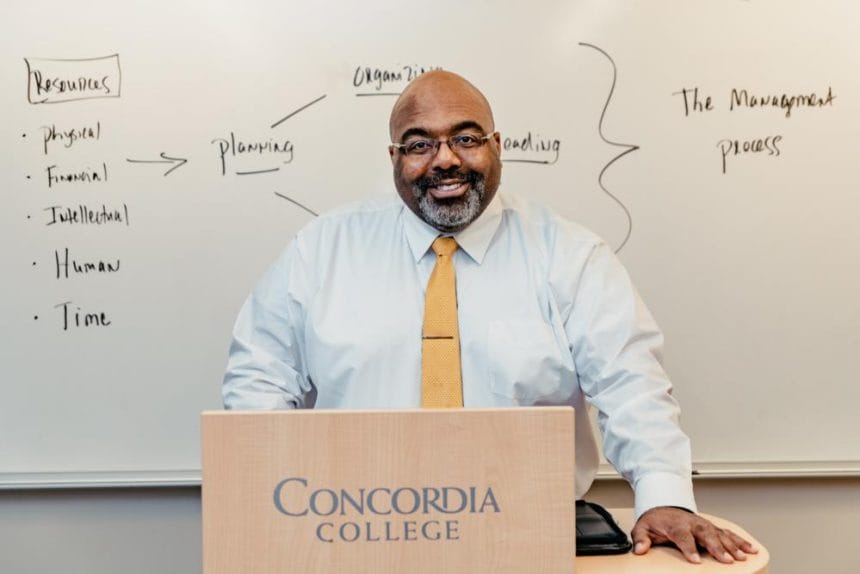Photo by Gary Ussery
During this time of social distancing due to the COVID-19 global pandemic, I’ve been watching way more movies that I normally do each week. And if you are a current or past student of mine, then you know for me to say I am watching more movies, it means I’m watching a lot more movies!
Recently, I was re-watching my favorite movie “The Dark Knight” (2008) for the umpteenth time. If you are like me, there is a specific scene in your favorite film that you can quote verbatim or re-enact by memory. For me, that scene in “The Dark Knight” is the Interrogation Scene. For those of you who have seen this movie, you know what scene I am talking about where Batman and his archenemy The Joker are in a two-way mirror interrogation room in the Gotham Police Department. Now for those of you who haven’t seen this movie, two things: 1) where have you been? and 2) Go watch this movie within 24 hours of reading this article! Anyhow, during this scene, The Joker was trying to explain to Batman that because of his efforts to eradicate crime in Gotham, the new normal would be for criminals, like The Joker, to step up their game. Every time this movie scene comes on, no matter what I am doing, I stop to watch this masterpiece in acting and dialogue, especially the part when the Joker says the following eerie words:
“Those Mob fools want you gone so they can get back to the way things were. But I know the truth. There’s no going back. You’ve changed things. Forever.”
The Joker
I’ve thought about those words in the context of recent events. Obviously, the COVID-19 global pandemic is way more serious than a fictitious movie. COVID-19 is real life, and it is an unprecedented game changer. In business, we often talk about innovation as a means of disruption to the status quo. In this case, we have a global pandemic that is forcing organizations to change and adapt essentially overnight. Consider this: Out of the seven different categories of major crises that managers must will deal with (economic, informational, physical, human resource, reputational, psychopathic acts, and natural disasters), COVID-19 presents issues in several of these areas for managers and organizations. It has possibly forever changed how we will work in the future. To get a glimpse of what that future might look like, I highly recommend reading the article titled “This is the end of the office as we know it” by Rani Molla.
When the late Steve Jobs shared his life experiences during his 2005 commencement address at Stanford University, he alluded to the problem with understanding life experiences while one is experiencing them versus the clarity of understanding life experiences upon reflection. His exact quote: “You can’t connect the dots looking forward; you can only connect them looking backwards.” So to continue with another movie reference, let’s get in our “Back to the Future” DeLorean time machine car and fast forward five years from now. It’s the year 2025, and you come across this 2020 article in your search for practical tips on how to help others better understand your organization and its culture in light of the difficulties that COVID-19 (and whatever may have happened since then) have presented. One way is through the development of a compelling organizational story and narrative timeline.
Organizational stories are “narratives based on real organizational experiences that have become embellished over time and illustrate core cultural values.” Ronald Humphrey has developed an activity and exercise that I use in my leadership courses to help students develop their own personal leadership story and narrative timeline. I believe that this activity and exercise can be modified and used at the organizational level, and I have included the steps below:
Step 1: List the major events that have occurred in the life of your organization.
Be sure to include the dates when these occurred. Definitely involve organizational members who have been with your organization for a long time and those who have direct experience and knowledge about your organization.
Step 2: Classify each major event.
According to research ,,, there are six different types of developmental events which are listed and defined below. Since these items were originally developed in a research study that included individual leaders, I have denoted changes and modifications using brackets “[]” to show how these events would apply to an organization as a whole:
- Originating Events: “Events that mark the start of [an organizational] path or career and result in goals and long term plans [for the organization].”
- Turning Points: “Events that create major changes [in direction of the organization]. They can also result in the creation of new long term goals [for the organization].”
- Anchoring Events: “Early [organizational] experiences that create a basis for a belief system that guides [organizations] toward certain activities and away from others.”
- Analogous Events: “Later [organizational] events that are similar to the anchoring events in some way.”
- Redemption Events: “Occur when [organizations] experience negative events but later attribute some positive outcomes to the events.”
- Contamination Events: “Events that were initially positive [for the organization] but then resulted in failure or other negative outcomes.”
Step 3: Connect the Dots and Draft Your Organization’s Story and Narrative Timeline.
At this point, determine which events are essential to be included. It would also be good to codify the story and timeline in a written document and made available to others for review.








